 |
| Carlos Bergamín/Alamy |
British Royal Heirlooms Sold at Auction
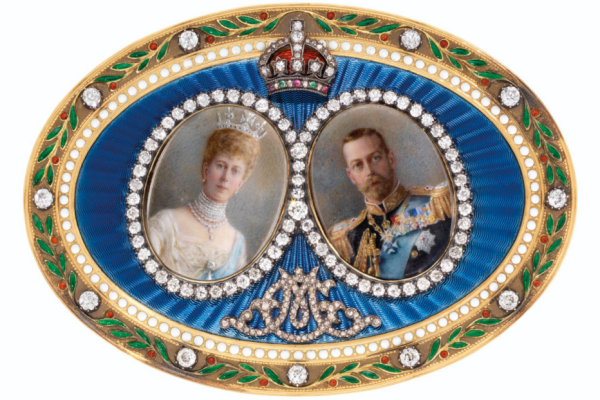 |
| Christie’s |
On Friday, a very royal auction was held at Christie’s in London. Furniture, artwork, and other treasures from the collections of the Gloucester and Harewood families were sold, including several objects that I thought would be of interest to readers here at The Court Jeweller. Here’s a little peek inside the sale.
 |
| Christie’s |
The auction didn’t include any of the kinds of jewels we usually cover here, but there were several badges, medals, and other similar items. Numerous coronation medals and miniatures were included in the auction, as was this medal from Queen Victoria’s Golden Jubilee in 1887. You’ll note that the bow also features a special gold bar marked with 1897, to commemorate the Diamond Jubilee a decade later. The medal belonged to a lady (identity either not known or revealed), and it later became part of the collection of Prince Henry, Duke of Gloucester, the father of the present Duke. The piece sold for £2000.
 |
| Christie’s |
Numerous stars and badges from orders of chivalry were also sold. The insignia from the Gloucester collection were auctioned with a special caveat: they were being sold “in aid of the International Red Cross.” This is the star and badge of the Order of Mohammed Ali, which was founded by Sultan Hussein Kamel of Egypt in 1915. The order was awarded until Egypt became a republic in 1953. The lot notes state that the order was given to Prince Henry, Duke of Gloucester in 1948. The insignia greatly exceeded auction estimates, selling for £16,250.
 |
| Christie’s |
This striking badge and star belong to the Order of Al-Kamal, an Egyptian order awarded exclusively to women. The insignia, made of silver-gilt and enamel, were presented to Princess Alice, Duchess of Gloucester, by King Farouk of Egypt when the Duke of Gloucester was promoted to the rank of general in the British Army. (That happened in October 1944.) This lot again greatly exceeded its estimate, selling for £15,000.
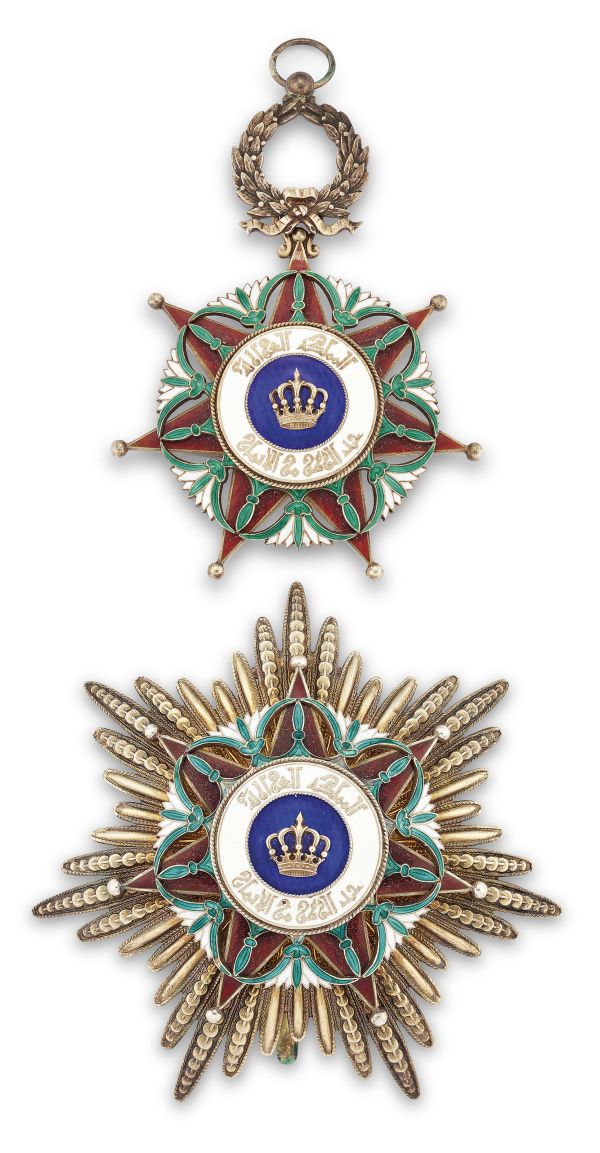 |
| Christie’s |
King Faisal of Iraq presented this star and badge to Prince Henry, Duke of Gloucester when he invested him with the Order of the Two Rivers in 1933. The occasion was King Faisal’s state visit to Britain, which took place that June, shortly before he died of a heart attack. This lot sold for £3,750.
 |
| Christie’s |
This grand set of insignia, which includes a collar, badge, and star, belongs to the Order of the Supreme Sun, which was awarded by the former Kingdom of Afghanistan. The order was discontinued when the country became a republic in 1973. The lot notes do not clarify when the order was presented or which member of the Gloucester family received it. (Prominent state visits of Kings of Afghanistan to Britain took place in March 1928 and December 1971.) The lot fetched the top end of its estimate, selling for £5,000.
 |
| Christie’s |
The sale included two sets of insignia of the Order of Tri Shakti Patta of Nepal. They were presented to Prince Henry, Duke of Gloucester and Princess Alice, Duchess of Gloucester, probably during King Mahendra’s October 1960 state visit to London. Henry’s insignia sold for £1,375, while Alice’s fetched £875.
 |
| Christie’s |
The badge and star of the French Legion of Honour were presented to Prince Henry, Duke of Gloucester at some point before the French state visit to Britain in 1939. (During that visit, President Lebrun presented the order to the Duke of Kent, and British papers noted that the Duke of Gloucester already had it.) The enamel on the star is damaged, but the lot still doubled its estimate, selling for £1,625.
 |
| Christie’s |
This lot includes four pieces of insignia — star, badge, dress miniature, and lapel stud — from the Italian Order of Merit. The lot notes indicate that Prince Henry, Duke of Gloucester received the insignia when he was invested as a member of the order on May 9, 1958, during President Gronchi’s state visit to London. The lot sold for a mere £625.
 |
| Christie’s |
The lot notes for this star and badge, from the Order of Merit of the Federal Republic of Germany, state that Prince Henry, Duke of Gloucester likely received the order during President Heuss’s state visit to London in October 1958. The lot sold for £875, slightly more than its estimate.
 |
| Christie’s |
The Gloucester collection also offered two sets of insignia from the Ethiopian Empire. The lot notes list this star and badge as part of the “Order of Exile of King Soloman,” but other sources online indicate that insignia of this design belong to the Order of the Queen of Sheba. That order was originally established as an order awarded to women, but it was later also awarded to men. The insignia in this lot sold for £375, less than the auction estimate.
 |
| Christie’s |
The other Ethiopian order included in the sale was the Order of Solomon’s Seal, the star and badge of which was bundled in a lot with a rare example of the Coronation Medal of Haile Selassie. (Prince Henry, Duke of Gloucester was the official British representative to the coronation of Emperor Haile Selassie and Empress Menen in November 1930.) The order was often bestowed on foreign princes like the Duke, who made multiple official visits to Ethiopia. The lot also sold for £375.
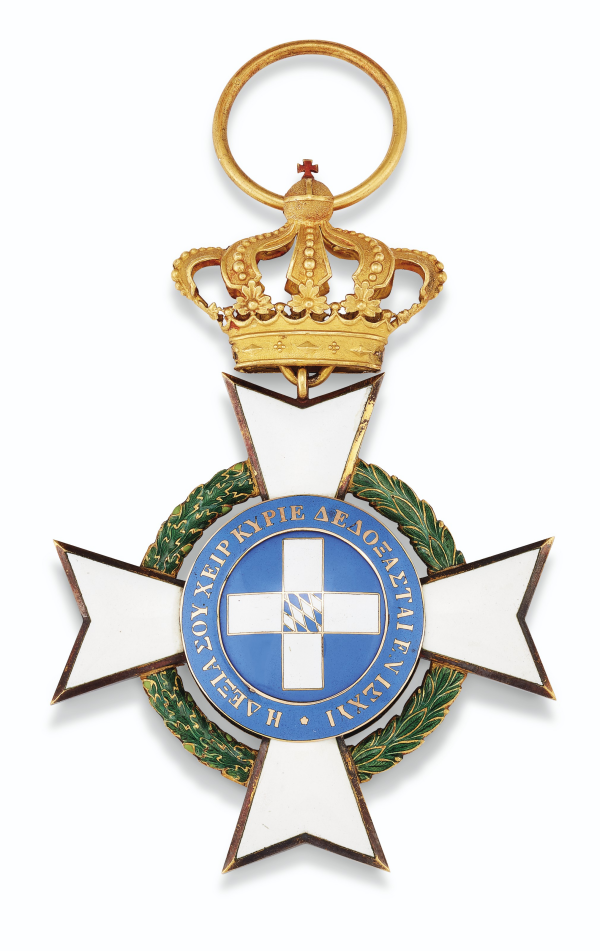 |
| Christie’s |
One more order badge was included in the sale, this time from the Harewood family. This badge of the Greek Order of the Redeemer dates to 1838 (during the reign of King Otto), when it was awarded to the 1st Earl Canning. From him, it descended through the family to the 6th Earl of Harewood (husband of Princess Mary). The badge far exceeded its auction estimate, selling for £7,500.
 |
| Christie’s |
Order badges, stars, and medals weren’t the only glittering objects sold in the auction. These silver-gilt and enamel pill boxes, made in Paris around 1950, were given by King Farouk of Egypt to Prince Henry, Duke of Gloucester. (The Duke visited Egypt numerous times during Farouk’s reign.) The boxes absolutely smashed their auction estimate, selling for a whopping £12,500.
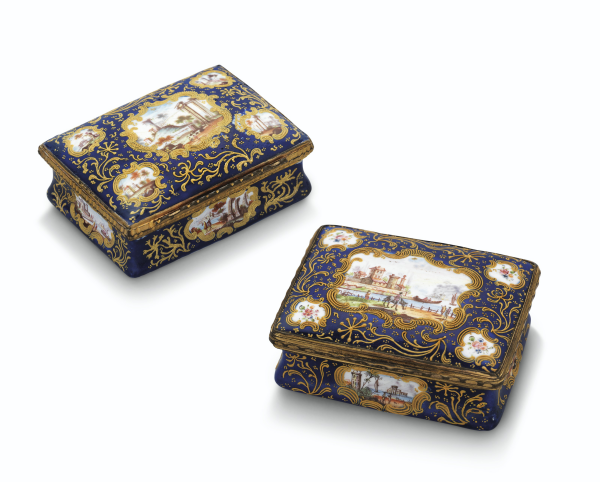 |
| Christie’s |
These Staffordshire enamel boxes, which date to the 18th century, were part of the Harewood collection. The lot notes explain that they were probably given by King George V and Queen Mary to their daughter, Princess Mary, to mark the christening of her first son, George. One box has a paper label indicating that they were given by “Papa and Mama” at Goldsborough on March 25, 1923 — the day of the baby’s christening. The boxes sold at auction for less than their estimate, fetching £1,875.
 |
| Christie’s |
One of the most magnificent objects auctioned was this fantastic jeweled enamel snuff box, made by Sebastian Garrard in London in 1911. The box was made to commemorate the coronation of King George V and Queen Mary, and it features miniature portraits of them on ivory set into the top of the box. The lot notes speculate that the royal couple gave the box to Prince Henry, Duke of Gloucester as a coronation gift. (They also note that the Royal Collection has a similar snuff box.) The magnificent box fetched £47,500.
 |
| Christie’s |
I’ll wrap up this look into the auction with one of my favorite items from the sale: this lovely pair of turned Brazilian amethyst spheres. These don’t have a lengthy royal history; they were purchased by the present Duke of Gloucester in 2006 at another auction at Christie’s. He did well for himself — he purchased the spheres for £840 in 2006 and sold them last week for £1,250.
The Daily Diadem: Maria Vladimirovna’s Pearl Kokoshnik
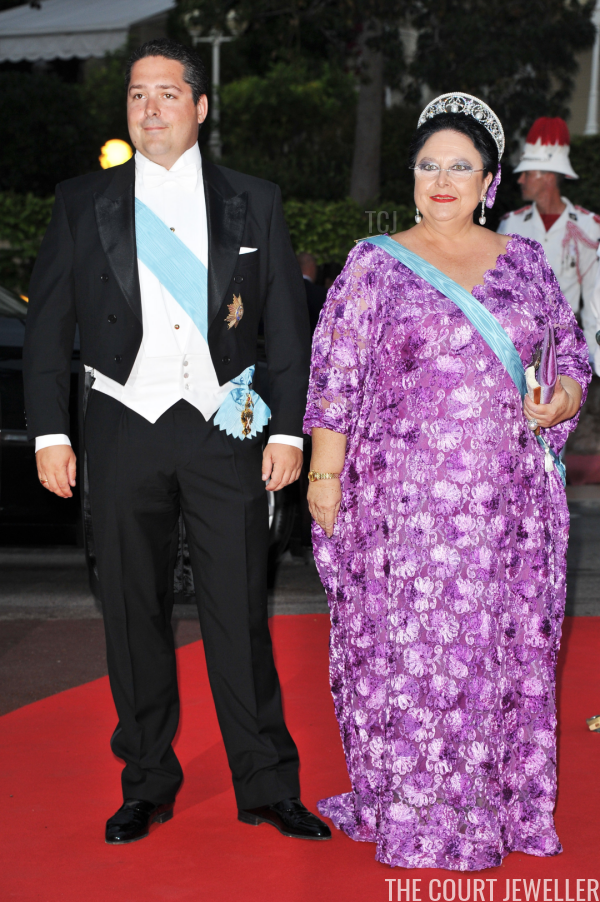 |
| Pascal Le Segretain/Getty Images |
- « Previous Page
- 1
- …
- 470
- 471
- 472
- 473
- 474
- …
- 1917
- Next Page »